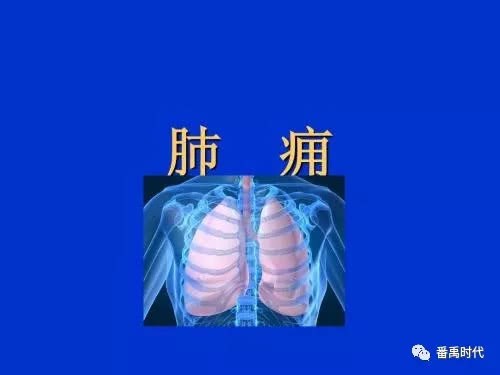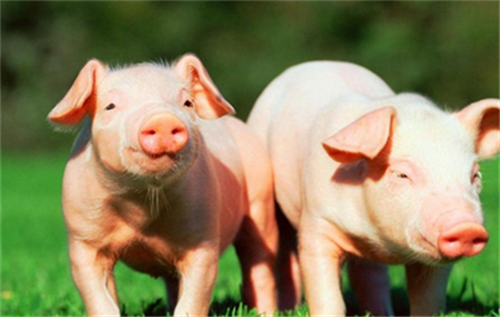Hemorrhage Learn more about Hemorrhage
-
Prevention and treatment of hepatic linear hemorrhage of cultured puffer fish

[symptoms of hepatic linear hemorrhage of puffer fish] the body color of the diseased puffer fish is black, and the color from the eyes to the kiss is obviously lighter, sometimes the body color of puffer fish becomes lighter and paler. Sometimes the base of caudal fin, anal fin and dorsal fin is congested. Cutting open the abdomen of the fish, you can see that there are 12 bright spots on the liver.
2020-11-08 Breeding puffer fish liver linear bleeding disease prevention and treatment -
Traditional Chinese Medicine attribute in Pulmonary Hemorrhage

Pulmonary hemorrhage is hemoptysis in traditional Chinese medicine. There are many theories about bleeding in traditional Chinese medicine, such as nosebleed, epistaxis, or purging blood. The hemoptysis of traditional Chinese medicine is due to tuberculosis, which is called tuberculosis in traditional Chinese medicine, and impotence and carbuncle.
2018-09-05 -
Prevention and treatment of Infectious Fish Hemorrhage

(a) the pathogen grass carp hemorrhagic disease is caused by a virus, which is caused by reovirus. (2) the organs and tissues of symptomatic grass carp showed speckled or massive hyperemia, such as oral cavity, operculum, fin base, muscle, intestinal tract, liver, spleen, kidney and so on. Grass carp above 10 cm and 15 cm are mainly hyperemia in intestine, fin base, operculum and oral cavity, showing "red fin fine Gill cover type" or "intestinal type", but muscle hyperemia is mild or non-hyperemia. One year old
2019-01-16 -
Harm of Duck Influenza and its Comprehensive Control

Duck influenza is a highly fatal infectious disease caused by influenza A virus, which can infect ducks of all breeds and every day of age. it is the most serious epidemic disease that harms duck industry. 1. Epidemic characteristics in the past, it was generally believed that waterfowl were only carriers of influenza virus and did not get sick. However, since the mid-1990s, ducks have been infected with highly pathogenic influenza virus, which breaks the traditional understanding of duck influenza. Ducks are not only highly susceptible to influenza, but also can transversely infect terrestrial birds.
2019-01-16 -
On the pathological types of Duck Cholera

Duck cholera is mainly septic pathological changes, visible to the naked eye as small bleeding on the serosa and mucous membrane. There are needle-sized, gray-white, neat-edged necrotic spots on the surface of the liver; splenomegaly, with necrotic spots of varying sizes on the surface; coronary sulcus, endocardium, epicardial hemorrhage and pericardial effusion; pulmonary congestion and hemorrhage; duodenal and rectal mucosal bleeding, intra-abdominal, gastric and mesenteric fat surface bleeding. 1. The most acute type died quickly and there was no obvious pathological change in autopsy. two。 Acute acute disease
2019-01-16 -
Porcine pseudorabies

The disease is an acute infectious disease of pigs and other animals caused by pseudorabies virus. It is characterized by fever, itching (except pigs) and symptoms of encephalomyelitis. Adult pigs often have recessive infection, with abortion, stillbirth and respiratory symptoms, while suckling piglets generally show neurological symptoms. Pathogen: the pathogen is herpesviridae, herpesvirus type I. The virus has strong resistance, but it is sensitive to heat, formaldehyde, ether and ultraviolet rays. There is only one serotype of this virus. Epidemic disease
2019-01-15 -
The old man was admitted to the hospital with cerebral hemorrhage. After coming home from the hospital, her four children refused to take care of them. The next day she drank pesticides.

There is a vast expanse of life and death in one or ten years. In the twinkling of an eye, her husband has left her for decades. For more than ten years, whenever I think of my husband, the one who remains most deeply in my memory is always Ah Cai.
2019-02-26 -
Clinical diagnosis and treatment of common reproductive disorders in small and medium-sized pig farms (1)

Clinical diagnosis and treatment of common reproductive disorders in small and medium-sized pig farms (1)
2020-06-27 -
Three types of common Streptococcus suis disease

Three types of common Streptococcus suis disease
2018-07-01 -
Diagnosis of poisoning-avermectin poisoning in pigs

Avermectin, a natural fermentation product of Streptococcus avermis, is a highly efficient and broad-spectrum antiparasite drug, which has a strong killing effect on nematodes and mites in animals. Miscalculation of etiological dose of ⒈ and blind increase of dose are the main causes of avermectin poisoning. In clinical practice, pigs are generally given subcutaneous injection at a dose of 0.3 mg / kg body weight.
2019-01-16 -
Comprehensive Prevention and treatment of Porcine Respiratory Syndrome

The characteristic of the disease is that it can occur in all seasons of the year, showing a local epidemic, and can occur in pigs of different ages. It mostly occurs at the age of 13 mi 20 weeks, the course of the disease is 2 mi 8 days, and the mortality is high. The body temperature of symptomatic pigs rose to 40.5 ℃-42 ℃, depressed spirit, loss of appetite or abstinence, dyspnea, sometimes cough, pallid visual mucosa, pale or purple skin, constipation or diarrhea, abortion and stillbirth in pregnant pigs. Suckling pigs showed neurological symptoms and high mortality. Pathological examination revealed 6 dead pigs and 2 seriously ill pigs.
2019-01-16 -
Symptoms, prevention and treatment of streptococcosis in chickens

Symptoms, prevention and treatment of streptococcosis in chickens
2018-06-29 -
How to prevent goose influenza

Goose influenza is a systemic or respiratory acute infectious disease caused by some pathogenic serosubtype strains of influenza A virus, mainly occurring in geese within 30 days of age. In recent years, the incidence of goose influenza has gradually increased, mostly because of sudden climate change, poor breeding management, goose cold infection. Mortality rates are generally between 50% and 90%. Clinical symptoms are acute type, sudden onset, depressed spirit, loose feathers, drooping wings, elevated body temperature,
2019-01-16 -
Symptoms, prevention and treatment of streptococcosis in chickens

Chicken streptococcosis is an acute septic or chronic infectious disease of chickens, which can be infected in both chicks and adult chickens. It is characterized by lethargy, persistent dysentery, claudication and paralysis, or neurological symptoms. Reports of disease in chickens, ducks, geese and pigeons in China
2020-11-11 Chicken Streptococcus Disease symptoms and Prevention methods -
The latest Research Progress of Porcine High Fever Syndrome

The "high fever syndrome" that first broke out in the south in the summer of 2006 has not yet subsided. This is what we pig farmers are most concerned about at present, and some readers have called our editorial department to inquire about the research progress of the disease! At the Annual meeting of Pig Industry of Beijing Animal Husbandry Association, Academician Chen Huanchun of Huazhong Agricultural University and Professor Yang Hanchun of China Agricultural University were invited to express their personal views on the current epidemic of "high fever syndrome". 1 the epidemic situation, first of all, geographically
2019-01-16 -
Bacterial intestinal hemorrhagic disease of money tortoise

Bacterial intestinal hemorrhagic disease of money tortoise is a kind of intestinal disease caused by conditional pathogenic bacteria. The disease is usually caused by unclean water quality, pollution or eating spoiled residual bait. In March 1997, the money tortoise in an aquaculture farm in Mule Town was characterized by diet, refusing to eat, not moving, mouth and nose bleeding, and even catching it by hand without running away. The case was diagnosed as bacterial intestinal hemorrhage by clinical and anatomical examination. The details are as follows: 1, the incidence of the aquaculture farm raised 57 money turtles, each body
2019-01-16 -
Etiological analysis of moldy forage poisoning in rabbits in rainy season

Entering the rainy and humid season, especially in the month, readers around the country have frequent telephone calls, frequent rabbit disease, continuous losses, and most of the symptoms are wilting, tremor, paralysis, paralysis, absurdity, diarrhea and so on. He looked like a coccidia before he died. However, it is comprehensively proved that it is caused by mold poisoning. Because the disease is urgent, the death is quick, the loss is big, and the danger is wide, so I write an article to warn you. 1. Etiological analysis: the month is rainy, hot, hot and humid. If the forage is not stored properly, it is easy to heat, ferment, mildew and produce mycotoxins, especially yellow koji.
2019-01-16 -
What are the common diseases of domestic geese? How to prevent and cure it?

Goose, with short breeding cycle, grazing grass and feed for a living, strong disease resistance, extensive management, low risk, is a good breeding project. But there will always be some diseases. What are the common diseases in that goose family? How to prevent and cure it? Let's learn more about
2020-11-11 Domestic geese common diseases which how prevention and control breeding -
Diagnosis and treatment of acute selenium poisoning in pigs

1 morbidity and clinical symptoms A total of 20 piglets in the same litter were raised by a professional pig farmer in Wuhua County, Guangdong Province in November 2002. the mother milk was sufficient, the piglets were fed normally and grew well, and the body weight of each piglet at 10 days old was about 1.5~2kg. The animal owner was injected with sodium selenite and vitamin E injection 2ml into each pig. The next morning, two pigs were depressed, unwilling to walk, did not feed, frequently urinated when standing, with a small amount of pain, shortness of breath, difficulty, walking such as drunkenness, walking aimlessly, banging their heads against the wall or turning in circles.
2019-01-16 -
Etiological Analysis of Chicken Encephalopathy

Chicken encephalopathy refers to the disease caused by the invasion of chicken brain tissue. The main manifestations are a variety of neurological symptoms, such as head and neck tremor, movement disorder, wing and leg paralysis, crooked neck, rotation and so on. The causes of the disease are varied, including bacterial, viral, metabolic, toxic and so on. Caused by E. coli invading brain tissue. Autopsy showed large grayish-white necrosis and depression of beans in the posterior part of the cerebral hemisphere. Clinical symptoms can be seen head and neck tremor, standing instability and so on. Aseptic at diagnosis
2019-01-16
